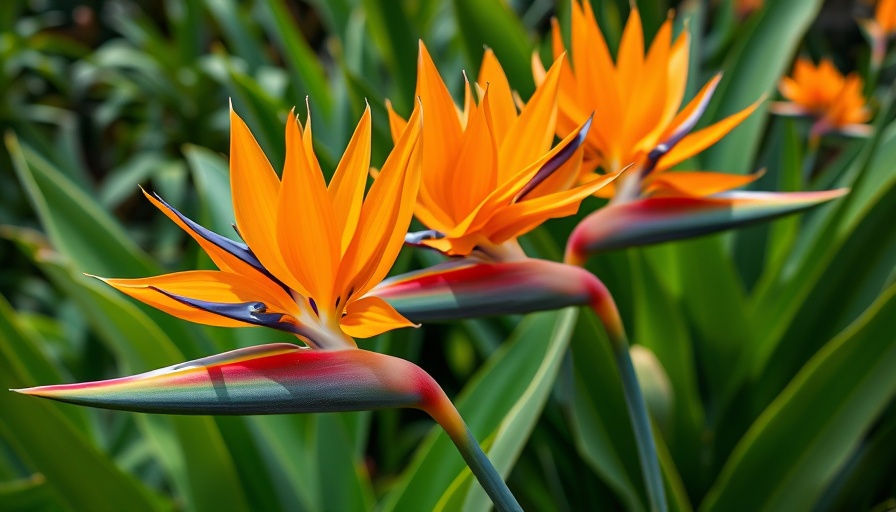
The Mystery Behind the Blooms
Bird of paradise (Strelitzia spp.) captivates gardeners with its unique appearance, offering a glimpse of tropical beauty even in non-tropical regions. With its vibrant foliage and exotic blooms resembling avian wonders, it’s no surprise that many enthusiasts strive to cultivate this striking plant. However, for some, the excitement of cultivation can be met with frustration when their bird of paradise fails to bloom. Let’s explore why this occurs and how you can ensure your garden thrives.
Understanding the Plant’s Origins
Natively found in South Africa, bird of paradise is designed to flourish in USDA Hardiness Zones 10 to 12, where warm weather conditions are prevalent. This plant requires warmth and regular humidity to thrive; extreme weather conditions and improper care can inhibit its flowering ability. Understanding its growth backdrop can help you replicate suitable environments, whether indoors or outdoors.
7 Reasons Why Your Bird of Paradise May Fail to Bloom
While bird of paradise is generally low-maintenance, several factors can hinder its blooming process. Here are the top seven reasons to consider:
Unsuitable Climate
Bird of paradise is extremely sensitive to temperature drops, struggling to bloom if exposed to frost or cold drafts. This plant is ideally suited for warmer climates, with optimal indoor conditions being between 70°F and 75°F during the day and no lower than 50°F at night. Ensure your plant is shielded from chilly environments to encourage flourishing buds.
Not Enough Space for Growth
Just like humans, plants need their space to grow healthily. A cramped environment can severely limit the growth of your bird of paradise. Make sure it has sufficient space for the roots to expand; ideally, a standard S. reginae should have at least six feet of clearance in the garden. Regularly repot into larger containers when necessary to keep growth on course.
Insufficient Light Levels
Bird of paradise thrives in bright, direct sunlight, requiring at least 6 hours of full sun per day. If your plant is in a shady area or not receiving enough light, it can stunt growth and lead to a lack of blooms. Positioning it closer to a window or removing other plants that cast shade can significantly improve its flowering chances.
Moisture Stress and Its Effects
Both overwatering and underwatering can cause moisture stress, putting your plant in survival mode instead of blooming. Monitor the soil moisture and ensure it retains consistent dampness without becoming waterlogged. Investing in a moisture meter can help you strike the right balance.
Nutritional Deficiencies
Like any living organism, your plant needs proper nutrients to thrive. An abundance of nitrogen without other essential nutrients can lead to lush green foliage but few blooms. Be sure to use a balanced fertilizer specifically designed for flowering plants to promote healthy growth and blossoming.
Spent Blooms Are a Reality
Just as other flowers do, bird of paradise goes through annual bloom cycles. After producing magnificent flowers, these plants may take a break from flowering for an entire season. This cycle of blooming and dormancy is completely natural and should be anticipated.
Pests and Disease Impacts
Various pests and diseases can affect the health of your bird of paradise, weakening its capacity to bloom. Aphids, mealybugs, and fungal infections can sap the strength of your plant. Regularly inspect for unwanted visitors and apply organic pesticides as necessary to protect against these issues.
Taking Action for a Healthier Bloom
To take full advantage of your bird of paradise's gorgeous potential, it’s essential to regularly evaluate its growing conditions. Use proper gardening tips to adjust and enhance the care you provide. Remember, a plant reflects its care; by offering optimal conditions, you open the door for future breathtaking blooms.
Final Thoughts
In sum, understanding the reasons behind your bird of paradise’s reluctance to bloom can unlock its potential. Recognizing plant needs such as suitable climate, space, light exposure, moisture levels, and nutrition can lead to a flourishing garden experience. To maximize the success of your flower garden and enhance your enjoyment of plant care, consider implementing regular evaluations and necessary alterations. Happy gardening!
 Add Row
Add Row  Add
Add 




Write A Comment